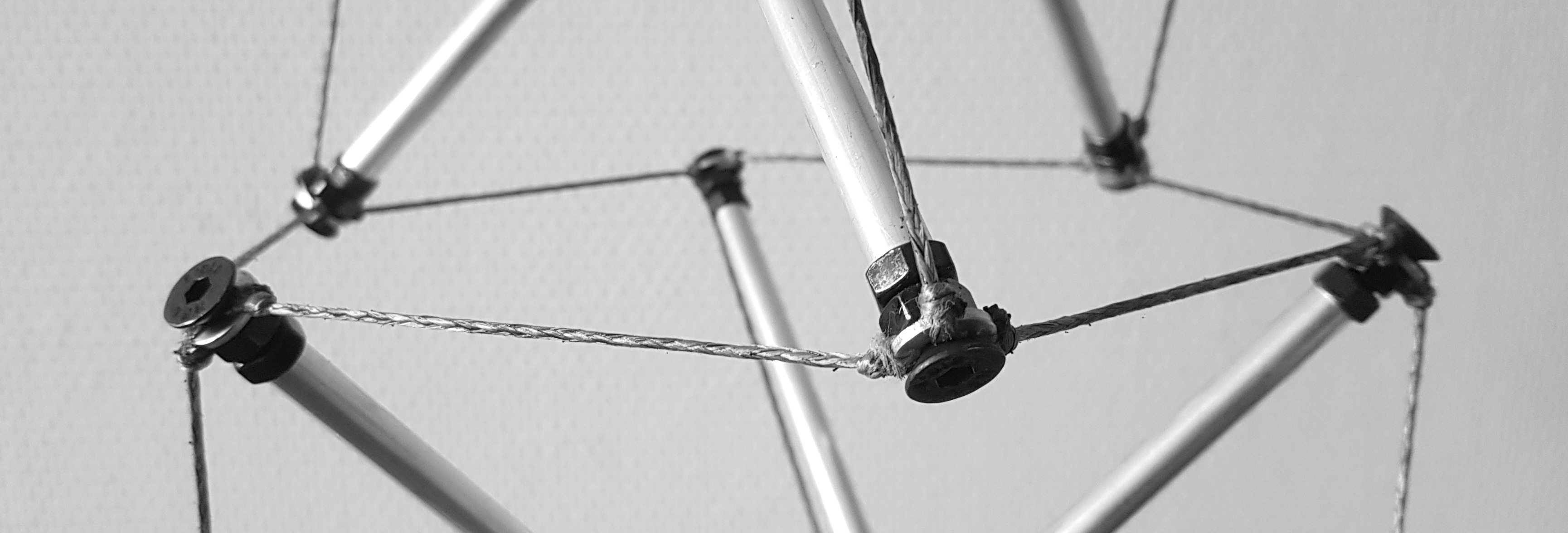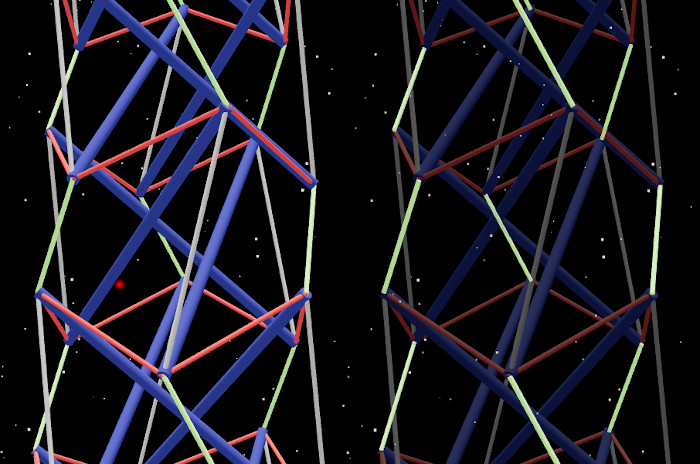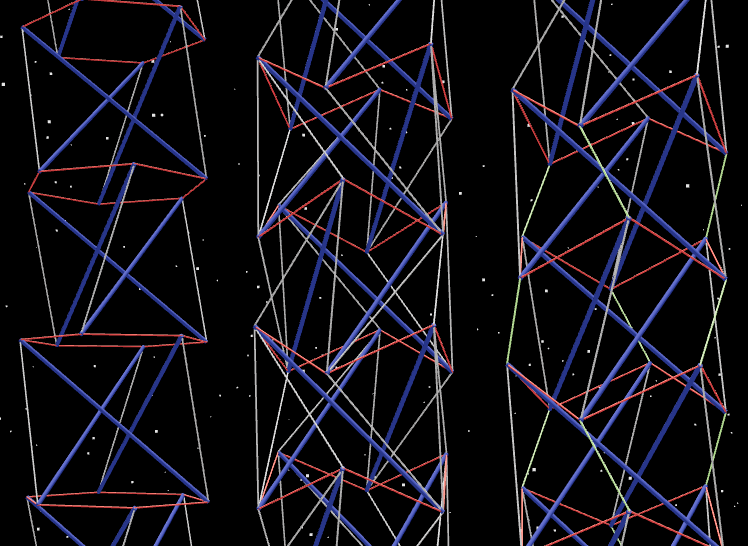Bow Tie Tensegrity
better bend resistance
Rigidity
The recent explorations into the Six Twist Essential tensegrity highlighted the inherent interesting degrees of freedom that the minimal configuration has. The flexibility comes from the tension hexagon.

Before I started building these, I considered it normal build towers that resisted bending by using the triangulated configuration that Ken Snelson used in my Brass and tulips project, and later just kept going on that track to build the crazy Halo by Crane structure.
This pulls the hexagons into zig-zags and makes adjacent twists snuggle closer and interpenetrate. The end result is a rigidity where some “Jitterbugging” takes place where the triangles twist.
But there is another way to pull the hexagons into zig-zags and tighten things up!
By connecting across twists so that an upper neighbor is connected to a lower neighbor across the twist that is in between.

What was previously a hexagon of tension in the minimal case gets a new diagonal tension line, and the shape that results from that made me think of a bow tie.

First in the virtual
Firs thing I had to do was rewrite the app to enable these different connection strategies.
- Minimal
- Snelson style
- Bow tie

I was able to separate the processes nicely. First generate the whole structure with minimal tension count and then, at the end, add the different extra connections depending on the strategy.
It was very interesting to play with bow tie connected versions of all the structures that had been generated up to now! They seem to have better rigidity with respect to resisting bending.
Trying it for real
I decided to adapt a Six Twist Essential (that has not yet been sold) to try out this new way of connecting.
I built it by adding the extra short cables during the prefabrication of the tension network.
Conclusion
I’m not entirely certain but this feels like something new!
It’s a minimal number of tension lines added to the Six Twist Essential but it also connects pairs of twists which are otherwise not directly connected even in the Needle Tower.
It still felt like something was needed, because the twists on either end seemed to be not connected enough and not behaving properly when stressed.
I was able to add a second radial tension on the end twist, and then with a bit of threaded rod, pull the two radials together. It stood so proudly I decided to make a flag pole of it.

This way of completing the final twists has a beautiful effect, since pressure from above actually tightens the upper radial while it loosens the lower one!